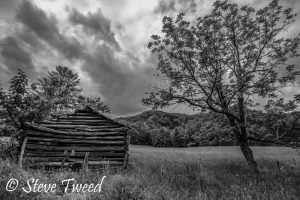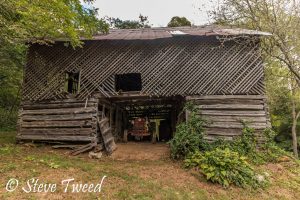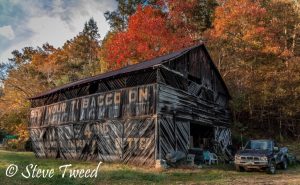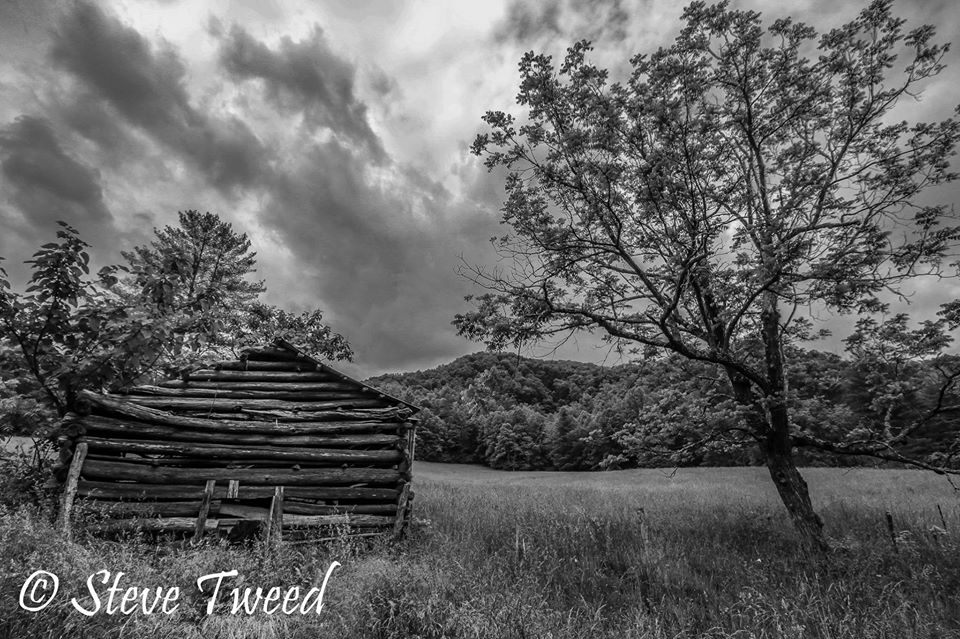Hi, Folks!
This week, I decided that I would do something a little different.
Most folks still like to get out and ride country roads, although the Sunday Drive does not dominate families leisure time as it did in the past.
 When riding country roads, most people enjoy the serene tranquility of Appalachian Family Farms. Therefore, this week I would like to point out the types of Appalachian Barns in order to help you identify the types of barns when you are out on an excursion (Use photos for reference).
When riding country roads, most people enjoy the serene tranquility of Appalachian Family Farms. Therefore, this week I would like to point out the types of Appalachian Barns in order to help you identify the types of barns when you are out on an excursion (Use photos for reference).
Although there are approximately 20 types of barns throughout Appalachia, there are 4 major types which have stood as signatures of a particular family farms lifestyle:
POLE BARN:
It is no secret that Burley Tobacco was the undisputed king of sustenance for most Appalachian family farms.
However, what most do not realize is that before the 1920’s, Flue Cured Tobacco was the tobacco crop of choice throughout the region.
The old pole barns you see, by and large, were Flue Curing Barns.
The tobacco crop was hung in the barns and then a fire was built into the clay floor in order to cure the tobacco.
The example shown in the photo is the Joe Tweed (1855-1939) barn in norther Madison County, North Carolina. The barn actually precedes his birth, dating to about 1820.
TRANSITIONAL LIVESTOCK BARN:
 A “Transitioned” Barn is a barn that started as a simple log livestock barn and then was transitioned over the years to meet a familys farming and livestock needs.
A “Transitioned” Barn is a barn that started as a simple log livestock barn and then was transitioned over the years to meet a familys farming and livestock needs.
The easiest way to identify these barns is to look for two sections of logs on the bottom of the barn.
Usually in symmetrical square or rectangles, the logs remain intact while the upper part and roof will be newer, hence “transitioned”.
The example offered here is the Ramsey Family Barn located in the Revere Community of northern Madison County, North Carolina.
HAY HOOK BARN:
A Hay Hook Barn is what I like to think of as an improved transitional barn.
Hay Hook Barns are easy to identify by the snout jutting out from the top of the barn.
Hay would be brought by wagon to the barn. A Hay Hook, which would have three or four grappling hooks would be lowered to the loose hay on the wagon. The hay would be then be lifted from the wagon with the hay hook into the barn loft and pitchforked to where it was needed.
The example offered here is the Delbert Shelton Barn. Located in northern Madison County, North Carolina this barn was built in 1954 based on a design which Mr. Shelton got by studying and measuring a barn in Greene County, Tennessee.
BURLEY TOBACCO BARN:
 The Appalachian Burley Tobacco Barn is the Mac Daddy of ‘em all. These barns stand as testaments to the advancements and prosperity of Appalachian Agricultural Culture.
The Appalachian Burley Tobacco Barn is the Mac Daddy of ‘em all. These barns stand as testaments to the advancements and prosperity of Appalachian Agricultural Culture.
Most of these barns are rectangular in design and date anywhere from the very late 1920’s to present day.
Unlike Flue Cured Tobacco, Burley Tobacco would be hung in the barn to air dry and cure, a process that usually would take about five weeks.
When the tobacco had cured, the tobacco was then “handed” meaning that the tobacco leaves were stripped from the stalks and then separated by grades: Lugs, Smokers and Tips.
Lugs are the large leaves on the bottom of the stalk. Smokers are the leaves in the middle and upper part of the stalk. Tips are the leaves at the very top of the stalk and they contain the most tar & nicotine.
Anyone in the know could tell who had been handing what grade due to the blackness of their hands at the end of the day.
Lug handers hands would be mildly dirty while a Tip handers hands would be almost completely black.
The example offered here is the Winston Cook Barn which was built circa 1928. Located in northern Madison County, North Carolina the barn was dismantled in November 2015, relegated to the annals of Appalachian History and Tobacco Culture.
 With the tobacco buyout and the decline of the Appalachian Family Farm, the barns are deteriorating and falling at a tremendous rate. It’s estimated that inside of 20 years, the majority of these barns will have disappeared from the landscape of Appalachia.
With the tobacco buyout and the decline of the Appalachian Family Farm, the barns are deteriorating and falling at a tremendous rate. It’s estimated that inside of 20 years, the majority of these barns will have disappeared from the landscape of Appalachia.
Efforts are being made to save some of the most important examples through groups like The Appalachian Barn Alliance.
You can check them out at www.appalachianbarns.org or you can find them here on Facebook at Appalachian Barn Alliance.
I hope this helped y’all and that you liked it.
Y’all have a great week!

